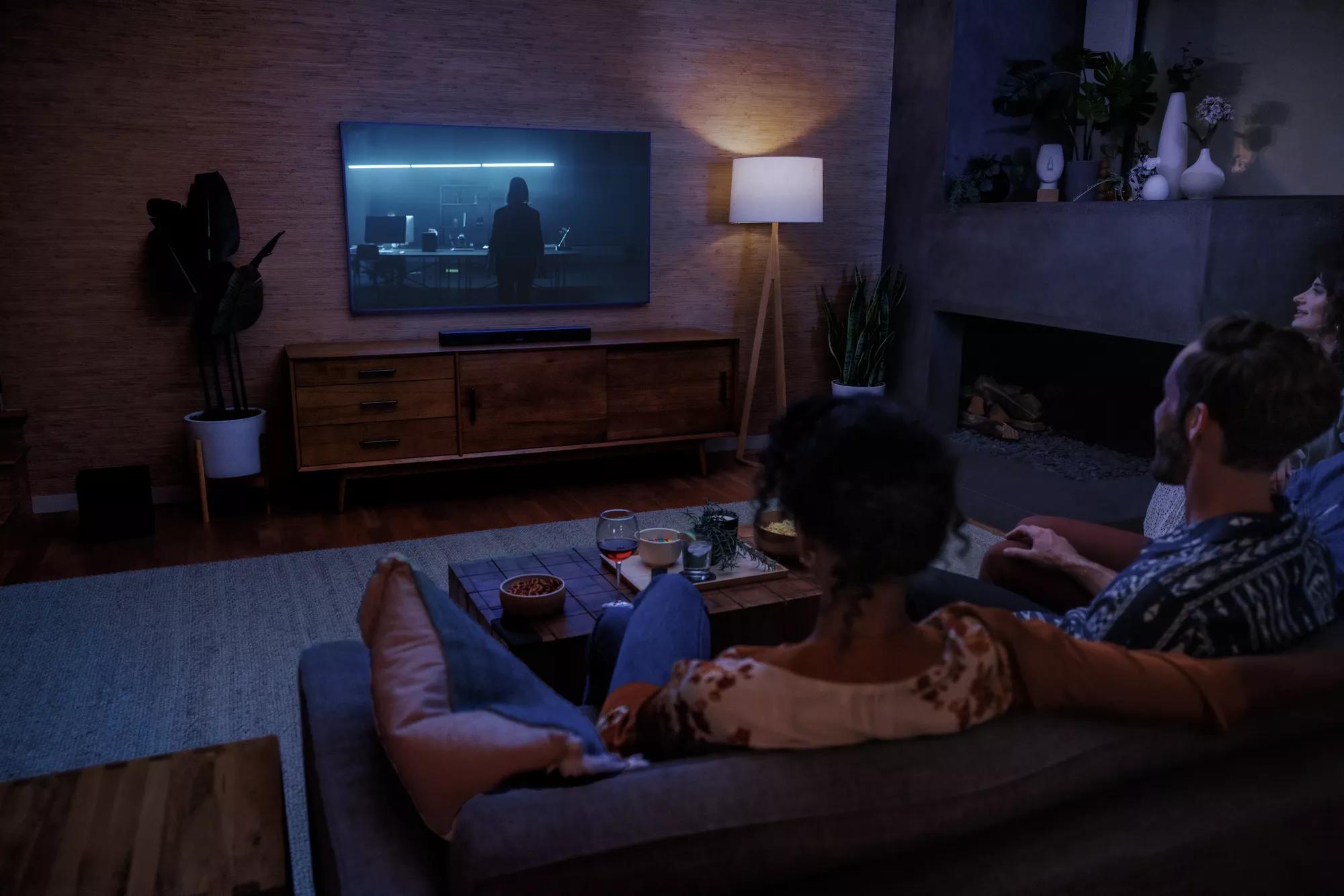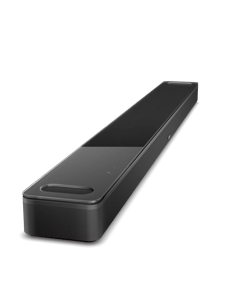Flat screen or projector?
To get an authentic theater experience at home, you might think you need a projector, but that’s not necessarily the case. Choosing between a flat screen and projector comes down more to the use case and room size.
Home theater projectors provide the largest picture possible, significantly bigger than most TVs. So, they only really make sense if you have a wall space or screen that large to project on. You also need a direct projection path between the screen and projector, which is usually best installed in the ceiling.
It's important to recognize that the gap between projectors and flat screens is narrowing with each new iteration of television technology. By and large, unless you purchase a high-quality projector, a decent television will probably look better, as the HDR displays more vibrant colors and deeper contrasts. Getting a similar-quality image on a projector also requires the removal of ambient light, which is why movie theaters turn off all the lights before a show. Flat screens, on the other hand, are not affected as much by room brightness.
Subwoofers bring the bass
As miraculous as a wireless soundbar can sound, especially on first listen, there are limitations at the lowest end of the sound signal. That's because soundbars cover a wide range of frequencies from high to low but don't specialize in any single one. As a result, your soundbar might not be able to punch the bass notes, low voices, and sound effects in movies, music, and games as much as speakers do at the cinema. Indeed, that’s why subwoofers were invented and integrated into most cinemas by the end of the 1970s.
You’ll hear the difference, too, when you connect a Bose subwoofer, such as the Bose Bass Module 700, to your soundbar, especially when the explosion on the screen rattles your body with lifelike feel.
Surround speakers for larger home theaters
While wireless soundbars can certainly fill the average living room, they may struggle in larger home theaters. Plus, although they create a surround-sound-like effect, they are not the true surround sound you'd experience in a movie theater. To achieve that, you'll need to place physical speakers around and above you. Plus, simply based on transducer size, surround sound speakers can deliver a more complete sense of envelopment.
One long-standing check against surround sound speaker setup is that it requires more than simply plugging HDMI cables into the TV. Most also require a receiver to power the speakers, and often cables running between each component, including along walls and ceilings to transmit that power. Soundbars usually can't be paired with them, either, as they operate on a different system and the sound signals tend to conflict.
Here’s where Bose Surround Speakers stand out, as they solve both of these issues. Not only are they wireless — removing one of the biggest hassles of setting up a surround sound system — they also pair with the soundbar. This means they work with each other, not against. Nor do Bose Surround Speakers need a receiver to power them; all you have to do is plug the included adapters into a power source.
Couches, chairs, beanbags, and more.
Setting up your home theater seating depends on where you put the screen, which should be away from high-traffic areas and direct sunlight, and slightly above eye level from your primary seat position. From there, calculate the ideal viewing distance according to the size of screen — around 1.5 to 2.5 times the diagonal width of the screen — and pixel pitch.
Once those basic positions are determined, then you can install proper theater seating or a collection of couches, chairs, and bean bags. It also reveals the gaps for other cinematic accoutrements, including posters, a popcorn machine, a DVD library, and even red velvet curtains across the screen for the full effect.
Speaker, soundbar, and subwoofer locations.




